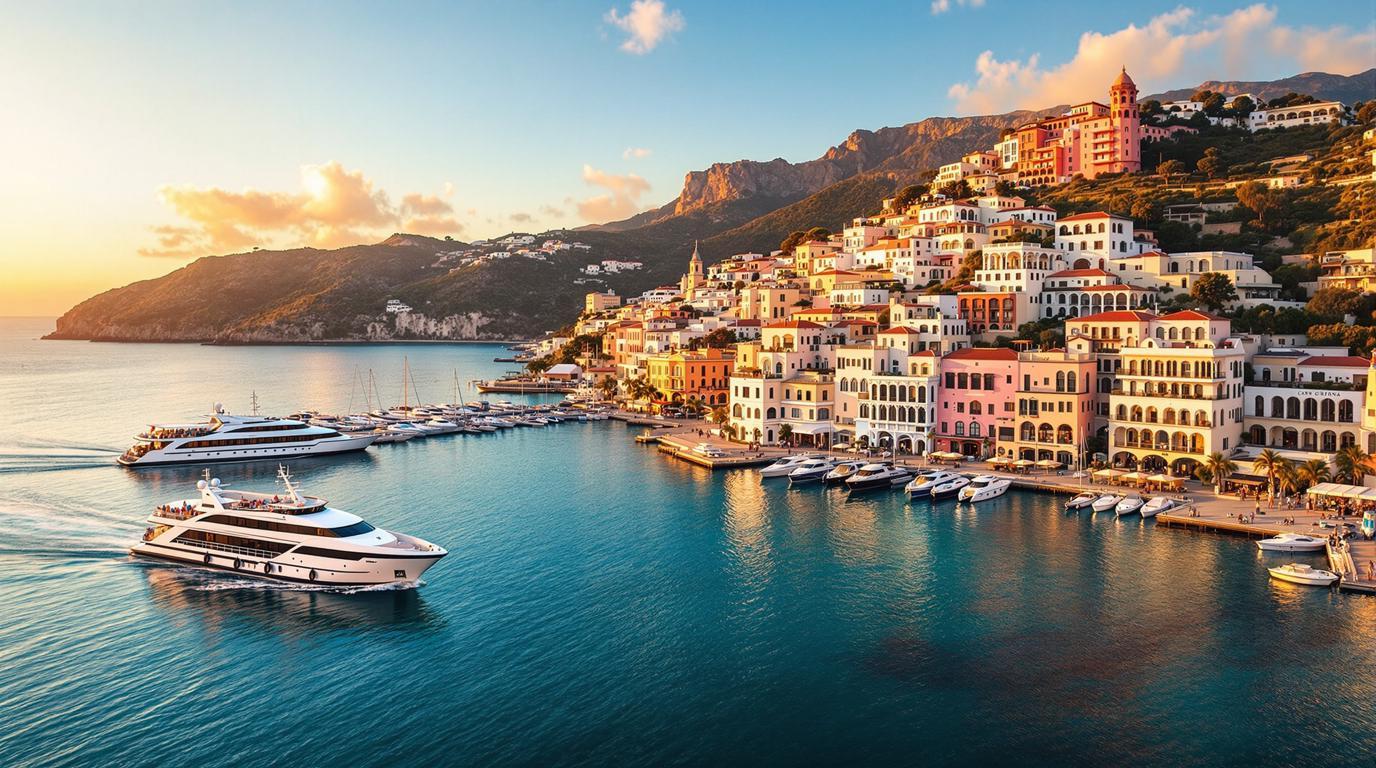I took a $30 ferry to Catalina Island—and found California’s Mediterranean secret just 22 miles from the bustling streets of Los Angeles. As I watched the mainland fade into the horizon, I had no idea I was about to discover a car-free paradise where time slows down and hidden coves await around every bend.
The $30 ticket to paradise
The Catalina Express ferry, gliding across the Santa Catalina Channel from Long Beach, delivers you to a world apart for just $30 one-way. Unlike the more expensive helicopter option ($100+), this leisurely hour-long journey across the Pacific lets you decompress as dolphins occasionally race alongside the boat.
Arriving in Avalon: California’s Mediterranean village
Stepping off the ferry, Avalon’s pastel-colored buildings cascade down hillsides in a scene straight from the Mediterranean coast. The absence of cars immediately registers—only the occasional golf cart putters along narrow streets lined with palm trees and art deco facades.
“Most people don’t realize we’ve had a car restriction since 1914,” explains Maria, a local tour guide. “There’s a 20-year waiting list just to bring a vehicle to Avalon. That’s why it feels like stepping back in time.”
Golf carts and buffalo: The island’s odd transportation duo
Renting a golf cart ($50-100/day) is the quintessential Catalina experience. I zigzagged up winding roads, stopping at panoramic viewpoints where I could see Caribbean-blue waters below. Surprisingly, the island’s interior hosts about 150 wild buffalo—descendants of 14 animals brought over for a 1924 movie and never removed.
Descanso Beach: The hidden social hub
While most tourists crowd Avalon’s main beach, locals pointed me toward Descanso Beach Club—a secluded cove accessible through a tunnel near the famous Casino building. Unlike most California beaches, you can legally enjoy cocktails right on the sand while lounging on cushioned cabanas.
Two Harbors: The island’s untouched wilderness
Taking the island shuttle to Two Harbors revealed Catalina’s wilder side. This tiny settlement on the island’s isthmus offers primitive camping and pristine beaches reminiscent of Maine’s remote islands—except with palm trees and year-round sunshine.
Secret coves only locals know
Shark Harbor, despite its intimidating name, became my personal paradise. This secluded beach, accessible only by hiking trail or kayak, features dramatic cliffs and emerald waters teeming with marine life. I spent hours snorkeling among vibrant fish, feeling worlds away from Los Angeles.
“People spend thousands visiting Mediterranean islands when we have this right here,” says Jake, a kayak guide. “I’ve shown visitors from Greece around who couldn’t believe they were still in California.”
Underwater adventures without scuba certification
The glass-bottom boat tours ($35) reveal Catalina’s underwater forests without getting wet. For a more immersive experience, the semi-submersible submarine tour ($45) puts you face-to-face with bright orange Garibaldi fish and swaying kelp forests that would look right at home in France’s hidden paradise waters.
Zip-lining across canyons with ocean views
For adrenaline seekers, Catalina’s zip line eco-tour ($129) sends you flying 300 feet above the canyon floor with panoramic ocean vistas—an experience that rivals similar adventures on car-free islands around the world.
California’s best-kept camping secret
Little Harbor Campground offers beachfront camping with amenities that put it leagues above typical California sites. Fall asleep to waves crashing just yards from your tent, where coastal fog creates an ethereal morning experience reminiscent of England’s mystical coastal islands.
The island’s most photogenic moment
Hiking to the Wrigley Monument at sunset, I watched golden light bathe Avalon Harbor as boats returned for the evening. From this elevation, the Mediterranean illusion is complete—whitewashed buildings cascading toward turquoise waters, framed by rugged mountains.
As my ferry pulled away the next afternoon, I understood why William Wrigley Jr. (of chewing gum fame) fell so deeply in love with this island that he purchased it outright in 1919. Catalina isn’t just California’s Mediterranean doppelgänger—it’s a pocket universe where stress dissolves, time slows down, and hidden coves reward those willing to seek them out.
